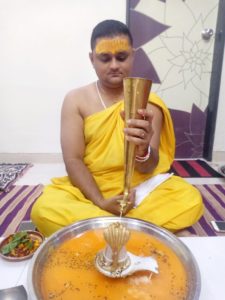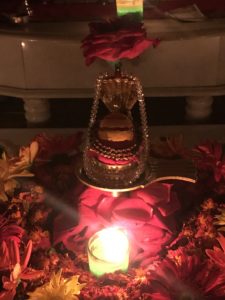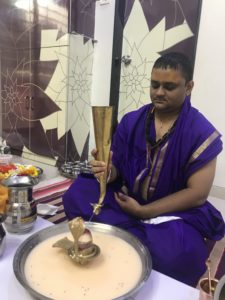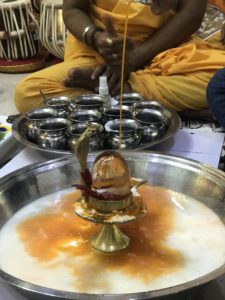Shravan month is starting from 12th august to 9th sept, it is advisable to do RudraAbhishek During this month. Significance,procedure and benefits of RudrAbhishek is as below.
Significance Rudrabhishek
Lord Shiva is also known as Rudra and Rudrabhishek is the ritual bath of the Shiv Lingam. It is one of the most significant and popular ceremonies to please Lord Shiva and is seen as the greatest spiritual puja in all the Vedic scriptures. Performing this puja bestows one with health, wealth and happiness and offers protection against enemies, negativity and evil. The fierce form of Lord Shiva is known as Rudra. Rudra, the fierce avatar of Lord Shiva, is considered as the embodiment of destruction, It is believed that one can overcome all troubles by appeasing this form. Lord Shiva can be worshiped in many ways, but the way, which has the power to bring the most effective result, is Abhishek of Shivalinga.
Procedure to perform Rudrabhishek
Abhishek dhara will be done on Shiv Linga along with the continuous chanting of the Rudra Ashtadhyayi, a Vedic mantra. Rudrabhishek begins with Ganesh Puja, After this, Shivling abhishek is carried out using the items like cow milk, coconut water, rice, powdered sugar, ghee, curd, honey, sugarcane juice etc. Later, flowers especially lotus flowers are used to decorate the Shivling and apart from flowers, leaves of the Bilva Patra tree are also used for decoration purpose. After all these rituals, aarti is performed at the end and prasad is distributed among the devotees who attended the puja.
Benefits of Rudrabhishek
1. It brings wealth and harmony.
2. Removes negative energy and purifies the bad karma.
3. Ensure a happy and prosperous married life
4. Protects from evils and gives strength to deal with difficulties.
4. It can also eliminate the evil effects of various doshas in one’s horoscope such as Rahu dosha, Shrapit dosha etc.





Recent Comments